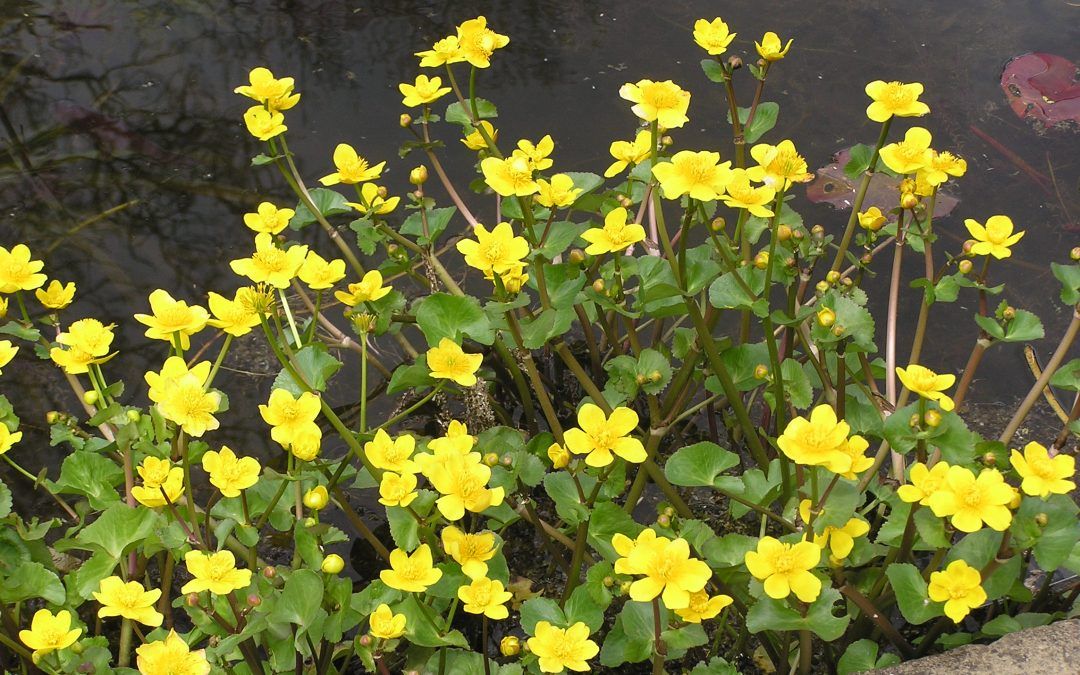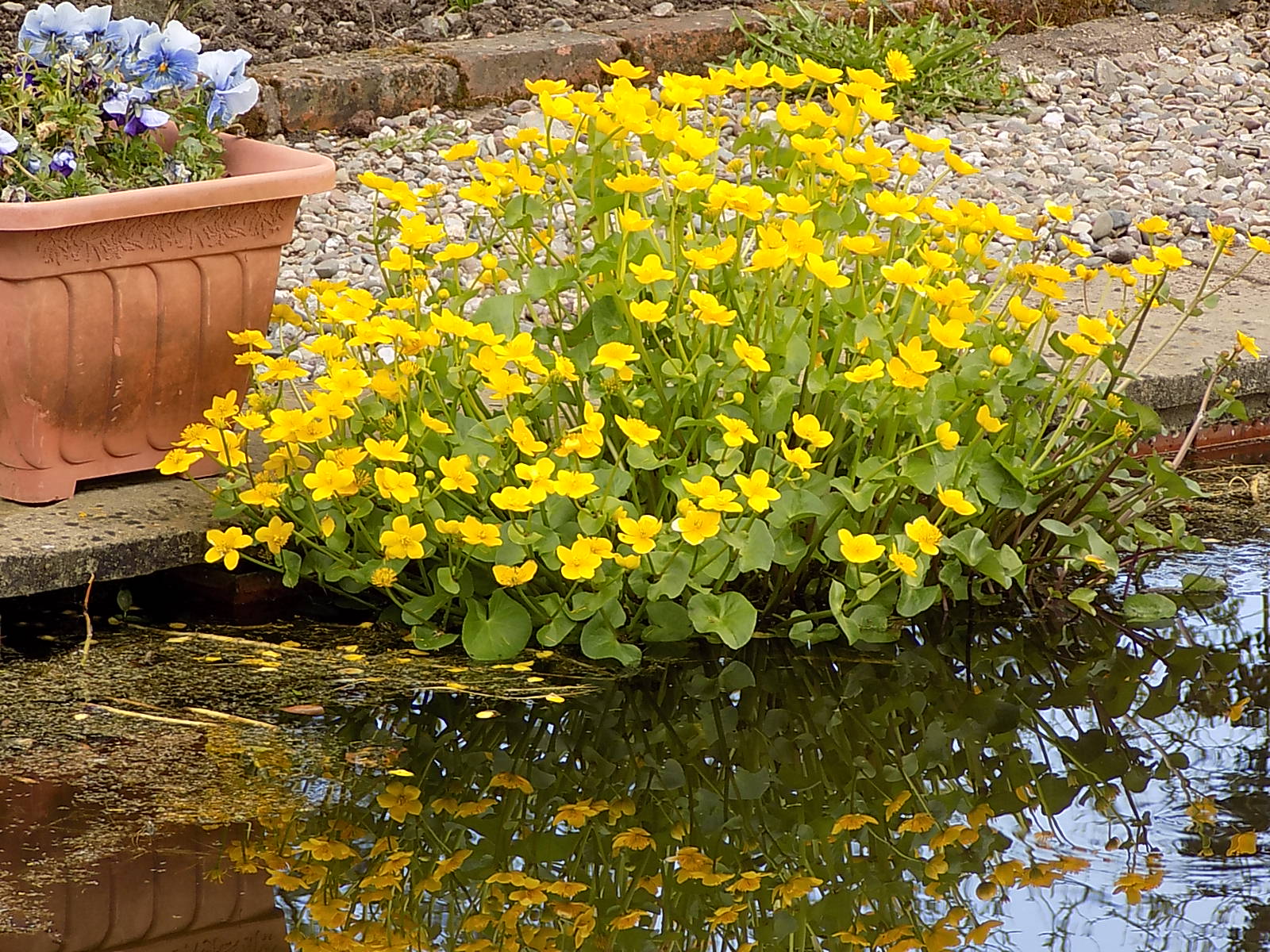Caltha Palustris, otherwise known as Marsh Marigold or sometimes Kingcup, is the earliest flowering of the commonly grown pond plants. It blooms in late March/early April bringing golden yellow brightness to your pond or pool. When planted into a 5lt planting crate it grows to form a satisfying clump of small, lime green leaves under a canopy of bright, buttercup yellow flowers. The leaves are saucer sized and flowers the size of a 50p piece. It is a wonderful early source of pollen for bees and hover flies.
Marsh Marigold is not demanding, being just as happy in full sun or shade. It’s happiest if settled on a marginal shelf with the water at, or just barely covering, the soil.
Propagation of Caltha Palustris
Although you can propagate Kingcups by division, it is just as easy and more productive to grow them from seed. Seeds generally ripen around June. We suggest keeping an eye on the seed pods, however, as they open and drop their seeds suddenly so it’s easy to miss collecting them!
For best results plant the seeds as soon as they are harvested into seed trays with small holes drilled into the base. Sow thinly with a very light covering of soil, we find Ericaceous compost gives excellent results. Place the seed tray inside a larger tray filled with water to keep the soil moist but not covered with water.
Germination usually starts within about 21 days. Transplant seedlings to half or 1ltr pots when large enough to handle, Marsh marigolds grow on in any type of soil. Keep the pots with the soil at or just above water level in full sun or shade. We have found that seed germination from the same tray can take place over a very long period. In some cases up to a year, so don’t be in a hurry to empty out the seed tray!
Herbal uses
The whole plant, especially the older portions, contains the toxic glycoside protoanemonin. Contact with the sap can cause a localised deep red blotchy rash. Luckily this soon disappears with no lasting ill effects.
Despite this, Caltha palustris has been used in the past as a medicinal herb to remove warts and in the treatment of fits and anaemia. Its inherent toxicity mean this is not now recommended.



